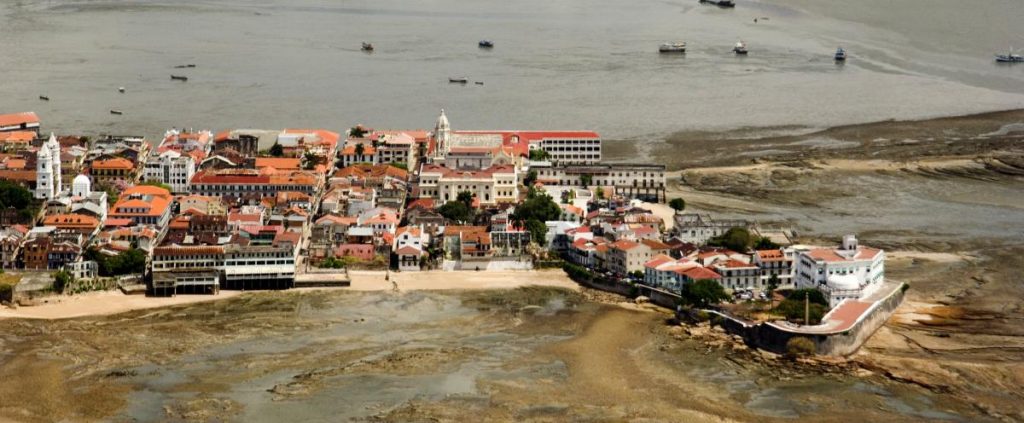An interview with Michael Geist: copyright reform in Canada and beyond
Dr. Michael Geist is a law professor at the University of Ottawa where he holds the Canada Research Chair in Internet and E-commerce Law. He is an authority on intellectual property, telecommunications, and privacy policy, and is a frequent writer and commentator on issues such as international trade negotiations and Canadian copyright reform. Geist will join the CC community at the Creative Commons Global Summit later this month.
Creative Commons is looking forward to hosting its Global Summit in Toronto at the end of this month. One of the topics to be discussed is how CC allies from around the world can share information and work together around supporting the reform of copyright rules in service of users and the public interest. CC affiliates are already active in copyright reform and commons advocacy in Europe, Australia, Latin America, and other places. Can you describe what’s going on with copyright reform in Canada, and how the Creative Commons network can help mobilize positive changes? What do you think we should push to achieve at the Summit re: copyright reform organising?
Canada is often held out as a great example of successful copyright advocacy leading to a more balanced law. After more than a decade of debate, the law was overhauled in 2012. While there are plenty of provisions for rights holders – strong anti-circumvention laws and anti-piracy measures – the law also features some innovative limitations and exceptions such as an exception for non-commercial user generated content. There is also a cap on statutory damages in non-commercial cases and a privacy-friendly approach to intermediary liability. Moreover, the Supreme Court of Canada has ruled that fair dealing is a user’s right that should be interpreted in a broad and liberal manner, leading to results that affirm a balance to copyright.
The 2012 reforms also included a mandatory review every five years, which means that a new review will start late in 2017. There is still room for improvement and learning from best practices from around the world would be enormously helpful. Moreover, there is an expectation that some rights holders will demand that the government roll back fair dealing at the very time that other countries are open to fair use provisions. The Global Summit offers an exceptional opportunity to develop national and international strategies, learn about reforms around the world, and begin the process of speaking with a consistent voice on positive copyright reform.
You’ve been a key voice in opposition to international trade agreements that attempt to push through restrictive clauses around intellectual property and e-commerce that enhance corporate protections while downplaying user rights. The most recent version of this was the Trans-Pacific Partnership (TPP), a sprawling agreement signed by 11 Pacific Rim nations, including Canada. Now that the United States, under the Trump administration, has formally withdrawn from the agreement, what is the future for the TPP? And what do you make of the seemingly inevitable reopening of NAFTA, especially with regard to digital rights?
The TPP in its current form is dead. The agreement reflects a bargain for countries premised on access to the U.S. market. Without the U.S., that bargain doesn’t make any sense.
That said, the U.S. seems intent on reviving many of the IP provisions in future trade talks, including NAFTA. The renegotiated NAFTA will have enormous implications for copyright and digital rights more generally. I expect to see pressure for copyright term extension and increased criminalization of copyright. On the digital rights issue, privacy concerns such as data localization and data transfers will be on the agenda. The U.S. is likely to promote restrictions on both issues, leaving countries between a proverbial rock and a hard place with the U.S. seeking open transfers and the European Union focused on privacy protections from localization and limits on transfers in some circumstances.
As usual, there’s a lot of FUD (fear, uncertainty, and doubt) that’s continually sown around claims about copyright’s effect on rightsholders. You’ve written on several of these topics recently, including efforts by rightsholders associations to inflate numbers on piracy rates, fraud in search index takedown notices, and disinformation around the impacts of fair dealing on publishers’ businesses. How can digital rights advocates fight against such tactics?
There has been a remarkable amount of fake news associated with copyright’s effect on rights holders. The Google data on fake takedown notices from its search index were stunning – more than 99% of requests did not involve an actual page in its search index. Similarly, during a recent trip to Australia and New Zealand I was shocked to see how Canadian law has been badly misrepresented with claims about effects on publishers that were simply false.
The best way to counter FUD is with facts. In Australia, one representative from a leading publisher approached me after a talk to express embarrassment over the claims that had been in that country’s policy process in light of the real facts. Our community should not hesitate to counter inaccurate claims on piracy and fair use/fair dealing with a clear, objective discussion of the reality online and in the marketplace.
The issue of supporting and expanding copyright exceptions for education is on the table now within the context of the reassessment of the EU copyright rules, the international agenda at WIPO, and other national level copyright reforms. How do you see this will be addressed within the Canadian copyright reform which will commence this autumn?
Canada included several new exceptions within the 2012 reforms, including the additional of “education” as one of the fair dealing purposes. The reality is that this change was relatively minor since the existing purposes such as research and private study covered most purposes within education. Indeed, the Supreme Court’s rulings on fair dealing were far more important than the legislative change. That said, there will be a concerted lobbying effort to roll back fair dealing for education in Canada that must countered with facts. Further, there is room for improvement. Canada’s anti-circumvention laws are among the most restrictive in the world and do not include a fair dealing exception. That should change if Canada wants to ensure that fair dealing is treated equally in the analog and digital worlds. Moreover, Canada would still benefit from a fair use provision, particularly given the increased emphasis on data and machine learning, which may not neatly fit within our existing purposes in all circumstances.
Spheres of Open: strengthening ties across the movement
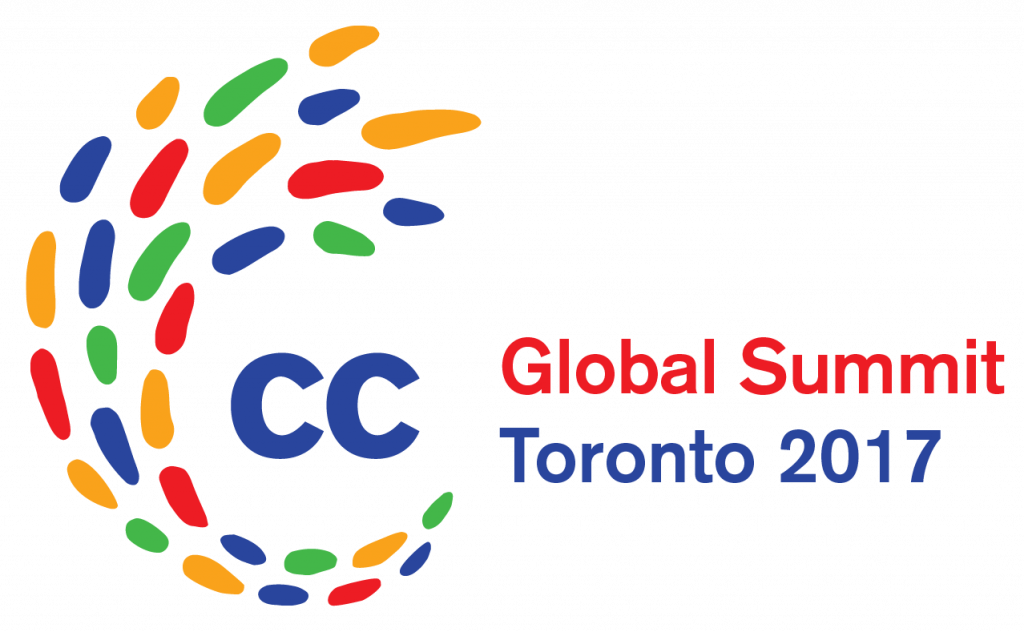
Sessions in the “Spheres of Open” track will focus on meaningful discussions about how we can work together to enhance, promote and move further the premises of CC in different areas of Open, such as Open GLAM, Open Education and Open Culture. Be prepared not only to learn from global practitioners, but also to be involved in a collective journey to search for the common questions regarding how we can make the world a better place with the CC community, its values, licenses and tools. This is an important year for the Creative Commons (CC) community gathering at the CC Summit, as we’re in the middle of discussing our new strategy, so be sure to drop by and join us!
Some of the questions that we’ll be exploring include:
- How can we celebrate and strengthen our ties to creators of culture who make the Commons visible and real to people?
- How might we ensure Open Access initiatives meet the knowledge and information needs of the public?
- How can we shape the future of the GLAM sector in a world with imbalanced copyright laws?
- How do we open up government archives and advance Open Data initiatives?
- Should we create an annual a CC film festival?
- How do we mainstream Open Education?
- How can open education be aligned with the global grand challenges we all face?
These are some of the questions we’ll be exploring as the CC network shifts from its role as a set of legal tools and licenses to a community that focus on people, sharing, and gratitude.
Future living with SPACE10: Open Source innovation for a local food system
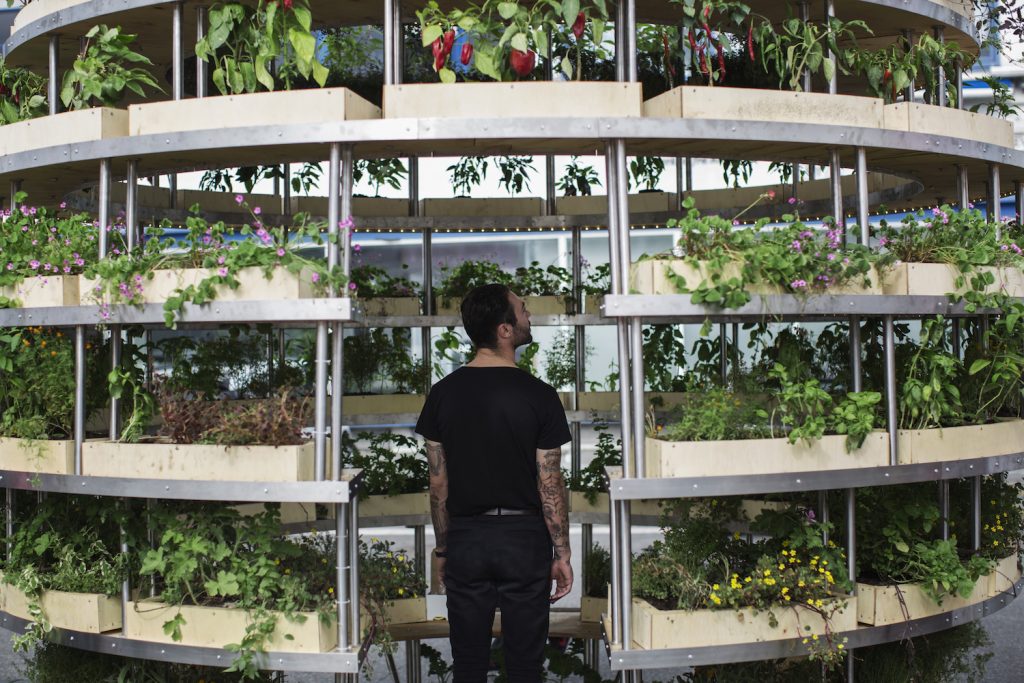
Photo by Alona Vibe, Munchies Festival
SPACE10 is a Danish “future living lab” with an open source twist. Founded by IKEA in 2015, the lab is focused on innovative design to help solve some of the world’s biggest problems. To that end, in February 2017, the lab licensed their popular Growroom design under CC BY in order to provide the maximum impact possible. This attractive, sustainable indoor circular garden quickly grows a massive amount of food in only a few square feet by utilizing vertical space, urban architecture, and hydroponics. In the words of director Carla Cammilla Hjort, “At Space10, we envision a future where we grow much more food inside our cities. Food producing architecture could enable us to do so.”
The Growroom can be downloaded and fabricated for free at the SPACE10 website and you can find out more about the project via their “Conversational Form.” Thanks to SPACE10 Communications Director Simon Caspersen for the interview.

Photo by Alona Vibe
The Growroom was launched in 2016 and open-sourced in February 2017. The expressed impetus for open sourcing the design was to encourage local production and materials. How did you come to that conclusion, and how has the project changed since it was open sourced? Why is open sourcing the plans vital to local food production?
We feel it makes complete sense because both our global food production system and our global supply chain of goods are based on the same model.
We produce everything on massive scale far away from where we live and ship everything halfway across the planet and into our cities, where we consume it before we export the waste.
This model has served us well. Humans have never been more food secure in the history of mankind and it would probably not by overreaching to claim that much of the living standards and material prosperity of modern society can be traced back to our current industrial model. The model, however, also has its physical limits, and these have been reached.
Our food system is driven by scale, chemicals, and fuel. It is one of the most crucial drivers of climate change. It is a critical user of our dwindling supplies of fresh water, the process compromises the nutritional value of our food severely, and 1/3 of the food produced goes to waste due to spoilage and overproduction. Furthermore, we each year note the date when humanity exhausts a year’s supply of the earth’s natural resources. In 2006 that date fell in October. In 2016 it was in August. All the evidence suggests that if we continue at our current rate, we’ll soon need a second planet…
We wanted to explore alternatives. The Growroom started as an architecture competition that we launched together with CHART. We wanted to explore how cities can feed themselves through food producing architecture. The winner was two Danish architects: Sine Lindholm and Mads Ulrik Husum, who created The Growroom as a one-off pavilion for the festival. The ideas was to spark conversations about this local food production.
The Growroom ended up sparking excitement from Taipei to Helsinki, from Rio de Janeiro to San Francisco, where people reached out and wanted to buy or exhibit The Growroom. But we didn’t feel it made sense to promote local food production and then start a centralised production of The Growroom and ship this large structure across oceans and continents.
We therefore tapped into the fab city movements idea of globally connected, locally productive cities that aspires to produce everything within our cities, went back to the drawing board and remade a version designed for open source, so we could ship the digital design files and let people build it themselves locally instead of the physical structure.
SPACE10 is a lab, a journal, and an exhibition space that explores the future of urban development. How do you think that open source plays into the future of global cities and production? How do you balance your approach to open as an Ikea project?
I think open source is one of the most exciting opportunities of our time. Open source could potentially change everything and empower people in ways we can’t even imagine. One thing is that open source and the advancements in digital fabrication will allow us to make everything locally – on demand. Whether it’s furniture, housing, cities, everything. Open source also enable us to not only share but also learn, build upon, and develop together. I deeply believe that if you are the smartest person in a room, you are in the wrong room. We need to surround ourselves with people who are smarter than us and open source allow us to learn and work together with the brightest minds out there.
In terms of IKEA, we are 100 % supported by IKEA and we work as an external future-living lab. If we weren’t looking into the opportunities of open source, we would be a pretty useless future-living lab, wouldn’t we?
We are also aware that transforming our current production system is a huge and complex issue and one of the biggest creative challenges of our time – and we also need to be aware of the social consequences if production moves out of areas where people depend on that for their livelihood. Nevertheless, it’s about getting in now, gaining learnings, and helping shape a future that is better for all of us.
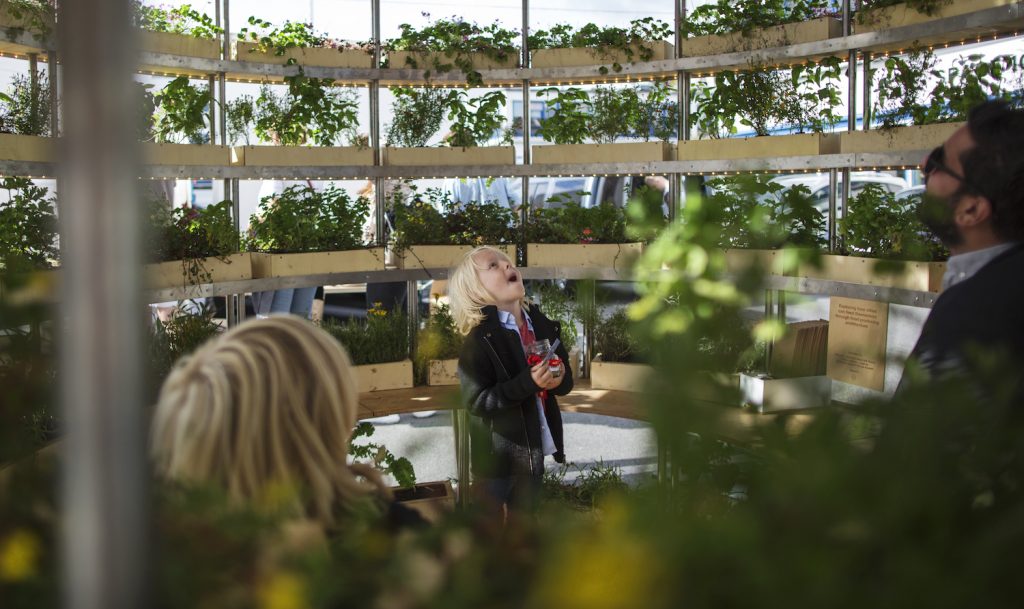
Photo by Alona Vibe
How difficult is it to actually put together the Growroom? How long would it take? Have you seen any successful examples of the finished project that you’d like to share?
It is fairly simple actually. We have a very intuitive manual. No big tools needed: two rubber hammers and a screwdriver. We just exhibited in Milan for the design week and it took three people one hour, but they have also done it before and the local fab lab had a very precise CNC, so everything was like LEGO.
We are seeing different versions pop up different places using the hashtag: #space10growroom on instagram, but have also seen people who have set a little business up on top of the design – here is a nice little video from Denmark and a website in Belgium. There have also been articles in the USA and Canada. And we have been in touch with people who have concrete plans to build one in:
Lund, Sweden
Stockholm, Sweden
Helsinki, Finland
Rensselaer, United States
Minneapolis, United Sates
Pittsburgh, United States
Alberta, Canada
Québec, Canada
Germany
Plymouth, UK
Rio de Janeiro, Brazil
This is the real beauty of open source. Our version is just the beginning. People are iterating, improving it, personalizing it, scaling it and implement technology in it. We even talked with people who want to make it in mycelium and pressed dirt, so it becomes 100 % biodegradable.
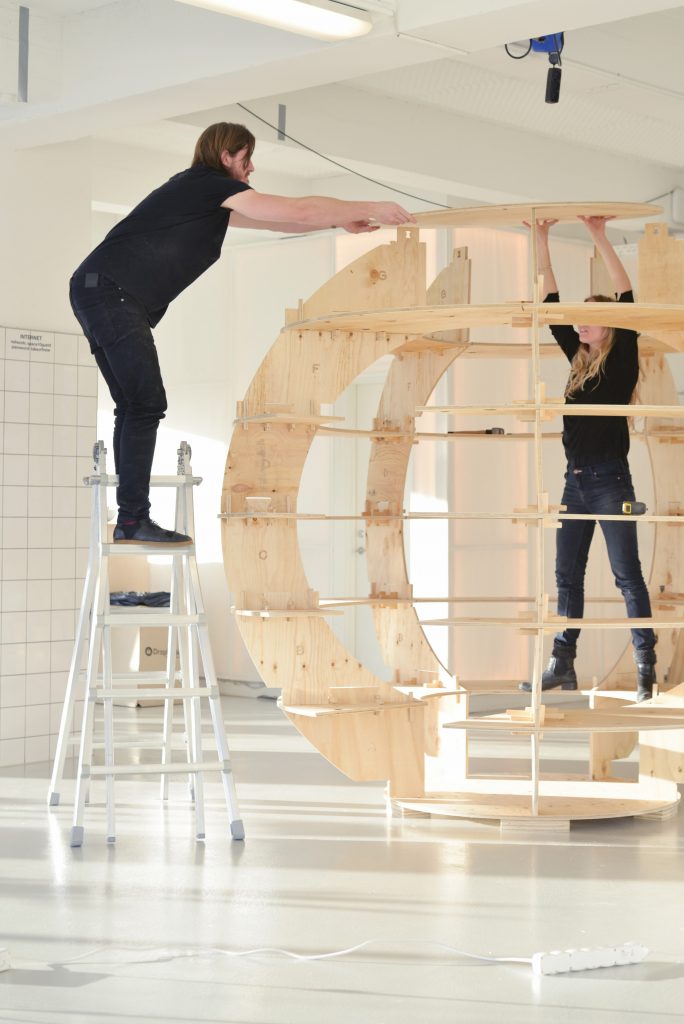
Photo by Niklas Adrian Vindelev, SPACE10
What advice would you give to other architects and designers who want open source their designs? Do you have plans to openly license other designs at SPACE10 in the future?
If your aspiration in life is to design beautiful solutions that makes a difference for a lot of people, then you have a unique opportunity with open sourcing your solutions or build on top of others. We are challenged with some big questions and our current answers seems insufficient and outdated. We need collaboration and forward thinking people to work together more than ever. Open sourcing the physical world is still in early stage, so it’s about dipping your toes in the water, exploring the opportunities and seriously: how often do you have a chance to be a pioneer in a field that have the potential to change everything?
At SPACE10 we would like to open source every time it makes sense. We strongly believe that collaboration beats competition.
We launched an open source digital framework back in November called the “Conversational Form” that turns web forms into conversations — we make it easy for developers and designers to engage with users in a more compelling and conversational way. We needed one for ourselves, but couldn’t find any suitable solutions, so we decided to build one of our own and open sourced it. A couple of months after – 200.000 people use it on daily basis on different platforms, and developers from all over the world iterate and build upon our initial framework, which benefits everyone. Imagine how much money we would have needed to build that big of a team to do the same work inhouse. Or imagine if Wikipedia had decided to build their site with an inhouse team. Imagine how your architectural design could scale, develop and improve over time if you just open sourced it.
Why did you choose to use CC BY as your license?
I was actually a bit unsure of what the right license would be. I wanted it to be as accessible as possible, but it was important that Mads-Ulrik Husum and Signe Lindholm (the designers) were credited for their work.

Photo by: Alicia Sjöström, Salone Del Mobile
Design blogs are asking if the Growroom is the urban gardening of the future, cementing its importance in the development of cutting-edge urban agriculture. How are you maintaining the project’s longevity What hopes do you have for the Growroom, and what would you like to accomplish with it in the future?
We have been very overwhelmed and incredibly happy with the positive response we have had from people, design institutions and media. For us, the ideal outcome would be that we didn’t do anything, but that people are inspired to build it themselves locally and gets joy from producing food on their own doorstep, rooftop or in their community – that it brings people together, support people’s sense of well being and provides food that is fresh, healthy, organic, and tastes better. That is what we dream of and why we open sourced it in the first place. I would also love to see people improve it, make it better and be creative with the design.
The Usable Commons at the CC Summit

The Usable Commons track at the CC summit contains an exciting array of sessions that explore how to make the digital commons more discoverable, usable, and human-centered. In content communities such as 3D printing, research, and social media, we will focus on key questions of human behavior, including: What motivates people to share online? What social and technical design factors help people to make connections and build relationships? What can CC and its partners do to better facilitate and foster this collaboration online?
In order of appearance on the summit agenda, below are some of the sessions and speakers central to the Usable Commons. Note that all sessions at the summit are tagged across multiple tracks. The Usable Commons is simply one way for you to navigate this year’s excellent program.
We look forward to collaborating with you at this year’s CC Summit in Toronto!
Note: Session times are subject to change. For up-to-date descriptions of each session, check the Sched app.
Sharing norms that go beyond the licenses and CC’s role, starting with 3D design community
(Day 1, April 28) Friday, 1:30-3:30pm
What would it look like for Creative Commons to shift its primary focus to the norms of sharing content online, rather than the precise legalities of sharing? To help us envision this strategy in practice, we will apply it in the area of 3D printing. We will look at the existing norms for sharing 3D designs, and then discuss how Creative Commons could help make the culture of sharing even more pronounced and productive in this domain. As part of the discussion, we will brainstorm specific things CC might do and talk about the potential negative consequences, as we explore this new way of operating. This will be a two-part session, with discussion/debate in the second hour.
Speakers:
- Tony Buser (Thingiverse/Makerbot)
- Meghan Coakley (NIH 3D Print Exchange)
- Jeric Bautista (re3D)
- Ben Malouf (Lulzbot/Aleph Objects)
- Meredith Jacob (CC U.S.)
- Frank Polcino (Thingiverse/Makerbot)
- Michael Weinberg (Shapeways)
- Sarah Pearson (Creative Commons)
- Jane Park (Creative Commons)
CC Search: Usability, Features, and Partners
(Day 1, April 28) Friday, 4:00-5:30pm
In February, Creative Commons released a working beta of CC Search. The initial service indexes about 1 percent of the Commons, and has a few key features, including list making, favoriting, and one-click attribution. Following the release, many partners have come forward asking to be involved. Before CC builds a complete index and service, we should continue consulting with partners, users, and the CC community. We’ll generate insights and map ideas for the future of CC search as a product. We will conduct a user-testing session; share statistics and analytics of CC search tools and partner platforms; work in smaller groups to generate solutions for a vital search product for the commons built to go beyond discovery to support collaboration and human connections
Speakers:
- Ryan Merkley (Creative Commons)
- Liza Daly (Software engineer, lead of beta CC Search)
- Rob Myers (Creative Commons)
- Maarten Zeinstra (CC Netherlands /Kennisland)
How to encourage prosocial behavior
(Day 1, April 28) Friday, 4:00-5:30pm
Healthy collaboration requires a lot more than copyright licenses. Among other things, it requires that people recognize the humanity in each other and behave accordingly, something that is far from a given online. Creating online environments that encourage prosocial behavior requires proactive effort and design. This session will feature platforms who regularly grapple with these issues. Each will explain the processes and infrastructure they use to create online environments where people interact in productive ways. Discussion will follow regarding what else we can do to foster greater cooperation and sharing online, especially with regards to commons content communities. We will explore the lifecycle of sharing, including: the pre-conditions for sharing, the actual act of sharing, what happens after sharing, and then what might feed back into the cycle, which may be ongoing or a one-time act.
Speakers:
- Juliet Barbara (Wikimedia Foundation)
- Ashe Dryden (Programmer, Diversity Advocate and Consultant)
- Alex Feerst (Medium)
- Tony Buser (Thingiverse/Makerbot)
- Sarah Pearson (Creative Commons)
- Jane Park (Creative Commons)
Share or Die: Is the Future of Manufacturing Open Source? Open Hardware Business Models
(Day 2, April 29) Saturday, 9-10am
How can manufacturers open source their design and products without losing their unique value proposition? This panel, organized by Danish Design Centre, debates the challenges and opportunities of designing open source-based business models for manufacturing and looks at the future of production in a new era. An era increasingly defined by not only the technology of the maker movement, but also its major underlying currents of knowledge sharing, co-creation and crowdsourced innovation. A future where manufacturers and designers will have to learn to share – or die.
Speakers:
- Christian Villum (CC Denmark)
- Paul Stacey (Creative Commons)
How to make good on the Creative Commons Promise?
(Day 3, April 30) Sunday, 10:30-11:30am
As use of Creative Commons licenses increases, we are seeing more instances of people misunderstanding the licenses or making mistakes with reuse. Creators who use Creative Commons face the issue that they often do not receive proper attribution that the licenses promised them when their works are reused. Reusers of CC-licensed works are increasingly facing the issue of legal threats from creators if they make mistakes in their attribution. In this session, we will discuss these issues, share our experience with them, and develop strategies for addressing them. We hope to develop an approach for how to proceed to better ensure that people are getting what they expect when they both release their works using a CC license and when they reuse CC-licensed works.
Speaker:
- Charles M. Roslof (Wikimedia Foundation)
Patents: The Next Open Access Fight
(Day 3, April 30) Sunday, 1:30-2:30pm
Even as scientific research becomes accessible to a wider public, some of that same research is falling into the hands of patent trolls, companies that serve no purpose but to amass patents and sue innovators who independently created similar inventions. Those trolls can undo open access allies’ work in bringing knowledge and innovation to the public. Join us for an overview and discussion about current day challenges and opportunities, and the role that Creative Commons might play in furthering a patent commons.
Speaker:
- Elliot Harmon (Electronic Frontier Foundation)
- Jorge Contreras (University of Utah)
- Diane Peters (Creative Commons)
- Ryan Merkley (Creative Commons)
CC Usability: Reimagining CC’s tools for real users
(Day 3, April 30) Sunday, 3:00-5:00pm
If we were to reimagine CC’s core tools for real users in 2017, who would be our core audience? If we didn’t have the constraints of 15 years ago when the licenses launched, how would we design the licenses to serve CC users’ needs and desires today? We will present and discuss current and new designs of the CC licenses, buttons, deeds, and chooser. Content platforms will provide insight into their users’ motivations. Additionally, we invite participants from every region to give us insight into their users’ needs, and an opportunity to help reimagine CC’s tools for the current web and sharing climate.
Speakers:
- Alex Feerst (Medium)
- Melissa Nightingale (Wattpad)
- Cheyenne Hohman (Free Music Archive)
- Charles M. Roslof (Wikimedia Foundation)
- Mack Hardy (Affinity Bridge)
- Eric Steuer (Creative Commons)
- Ryan Merkley (Creative Commons)
- Jane Park (Creative Commons)
Hacia la Implementación del Tratado de Marrakech en Uruguay
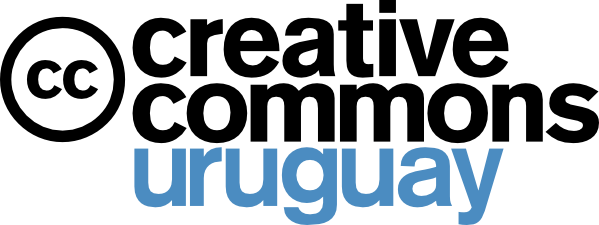
El “Tratado de Marrakech para facilitar el acceso a obras publicadas a las personas ciegas, con discapacidad visual o con otras dificultades para acceder al texto impreso”, constituye un hito en la relación entre los derechos de autor y los DD.HH., siendo el primer tratado internacional consagrado con el objetivo exclusivo de proteger los derechos de acceso a la cultura y el conocimiento.
Dicho Tratado fue aprobado en el ámbito de la OMPI en el año 2013 y entró en vigor el 30 de setiembre de 2016. Desde su aprobación y ratificación, varios Estados parte se encuentran trabajando para lograr su efectiva implementación a nivel nacional.
La implementación del Tratado de Marrakech
Dos aspectos clave a tomar en cuenta para la implementación de Marrakech en las legislaciones nacionales son:
1) Marrakech constituye un mínimo de protección. Las cláusulas mandatorias del tratado incluyen la obligación de establecer como mínimo las siguientes excepciones o limitaciones relacionadas con el acceso a las obras publicadas a las personas ciegas, con discapacidad visual o con otras dificultades para acceder al texto impreso:
- Excepción o limitación para la producción de obras en formatos accesibles.
- Excepción o limitación para la distribución y comunicación al público de obras en formatos accesibles.
- Excepción o limitación para la exportación (transferencia internacional) de obras en formatos accesibles.
- Excepción o limitación para la importación (introducción al país) de obras en formatos accesibles.
- Excepción a las Medidas Tecnológicas de control de Acceso (DRM)
Si bien en el cuerpo del Tratado se sugieren modelos de implementación para estas excepciones, estos modelos no son vinculantes. Las Partes Contratantes podrán incluir limitaciones y excepciones distintas a las previstas o con un mayor alcance, en la medida que se cumpla con la regla de los tres pasos presente en todos los acuerdos de DA y conexos.
2) La clave del éxito de Marrakech depende de la creación de redes internacionales con procesos ágiles de producción e intercambio de ejemplares accesibles, procurando evitar la duplicación de esfuerzos.
La mayor innovación del Marrakech es, sin lugar a dudas, la instauración de un régimen internacional de transferencia internacional de ejemplares en formato accesible, facilitando el intercambio y fortaleciendo la eficiencia de aquellas entidades habilitadas a realizar la producción y distribución de este tipo de obras. Estas instituciones deben contar con un marco normativo claro y compatible con el de las entidades de otros países. Un país miembro podrá establecer como requisito suficiente para la exportación que el país haya ratificado Marrakech o que su legislación lo permita, pero también podrá disponer otro tipo de restricciones. Esto último podría dificultar enormemente el análisis de la legalidad de la transferencia, operando de barrera en el intercambio. La redacción óptima de esta excepción será siempre la más simple y menos restrictiva.
El régimen de cooperación internacional encaminado a facilitar el intercambio transfronterizo previsto en Marrakech establece a la OMPI como punto de acceso a la información, por lo que la OMPI se encuentra actualmente trabajando en la creación de una base de entidades autorizadas a nivel mundial, un catálogo mundial de obras y mecanismos de análisis de la compatibilidad entre legislaciones (a través del Proyecto ABC). Entendemos que, la implementación óptima del tratado a nivel nacional, deberá efectuarse indefectiblemente en coordinación con la OMPI.
Implementación de Marrakech en Uruguay
Los días 23 y 24 de marzo tuvo lugar en la ciudad de Montevideo el “Seminario Nacional: El derecho a la accesibilidad. La excepción a los derechos de autor en la Ley de Derechos de Autor del Uruguay y la implementación del Tratado de Marrakech de la OMPI” coorganizado por el Consejo de Derechos de Autor del Ministerio de Educación y Cultura de Uruguay (CDA – MEC) y la OMPI.
En dicha ocasión, fue presentado y discutido el proyecto de Decreto reglamentario del Tratado elaborado por el CDA-MEC. A su vez, las diferentes instituciones del gobierno, academia y sociedad civil que se encuentran trabajando en proyectos de bibliotecas digitales accesibles, presentaron sus experiencias e inquietudes.
Destacamos algunos aspectos de la propuesta de Decreto Reglamentario presentado por el CDA- MEC de Uruguay:
- Se implementa el Tratado mediante la instauración de excepciones, excluyendo el uso de licencias obligatorias o limitaciones con remuneración compensatoria. Este requisito de remuneración compensatoria sería un gran obstáculo o carga poco razonable, ya que los proyectos de bibliotecas digitales accesibles de países como Uruguay cuentan con pocos recursos e infraestructura. Por otra parte, no existiría nada que compensar cuando la oferta comercial de obras en este tipo de formatos es prácticamente inexistente.
- Se propone la creación del “Registro de Obras e Instituciones Autorizadas comprendidas en la excepción de derecho de autor a favor de personas ciegas o con otras discapacidades para la lectura”, el registro será de carácter obligatorio e implicará la creación de un catálogo nacional de obras y de una nómina de instituciones autorizadas. Dicho Registro estará a cargo de la Biblioteca Nacional del Uruguay que además cumplirá con las funciones de control, coordinación y colaboración con las las instituciones autorizadas, así como la facilitación y estímulo del intercambio interinstitucional y transfronterizo.
- El Proyecto de Decreto declara como “instituciones autorizadas” para proporcionar y producir ejemplares en formatos accesibles a las instituciones de enseñanza públicas y/o privadas, las Bibliotecas públicas o privadas y a dos asociaciones: la Unión Nacional de Ciegos del Uruguay y la Fundación Braille del Uruguay. De esta forma se facilita la existencia de proyectos de producción y distribución de ejemplares en formatos accesibles en estas instituciones. Se prevé que, para otro tipo de instituciones sin fines de lucro, exista un trámite de acreditación, autorización e inscripción en el registro.
- Se habilita directamente a los beneficiarios del tratado (personas ciegas o con problemas de acceso al texto escrito) y a las personas que actúen en su nombre a producir e importar ejemplares en formato accesible, no solamente a las instituciones autorizadas.
- El Proyecto de Decreto NO obliga a efectuar un análisis de mercado previo a la producción o distribución de cada ejemplar, con el fin de determinar la posibilidad de obtención comercial en condiciones razonables. Simplificando, de esta forma, el trabajo de las bibliotecas, instituciones educativas y fundaciones.
- El Proyecto de Decreto plantea una redacción simple, clara y sin mayores restricciones para el caso de intercambio transfronterizo de obras: toda institución autorizada que se encuentre registrada podrá distribuir, comunicar o poner a disposición de las personas beneficiarias o para una institución autorizada establecida en otro país Parte Contratante del Tratado de Marrakech o de un país cuya legislación lo admita, las obras en formato accesible de su catálogo.
- Por último, se establece la legalidad de la elusión de medidas de protección tecnológica en el marco de las actividades relacionadas con estas excepciones. Por lo que, por ejemplo, desencriptar o desactivar la protección tecnológica de un archivo que contenga una obra, para producir un ejemplar accesible, no sería sancionable por el delito penal previsto en el artículo 46 de la ley de derecho de autor de Uruguay.
Consideramos que la reglamentación propuesta por el Consejo de Derechos de Autor del Uruguay es un buen modelo a seguir, esperamos sea aprobada a la brevedad por el Poder Ejecutivo.
Almanaque Azul: a Panamanian travel guide licensed under CC

Licensed under CC BY-NC-SA by Alamanque Azul
Almanaque Azul is a group of Panamanian environmentalists, artists, and explorers that began the process of creating a travel guide for the beaches of the Republic of Panama in 2005 through a blog that chronicled the amazing cultural and natural diversity of various small towns and deserted beaches.
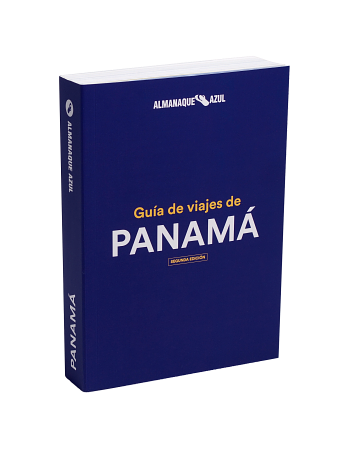
Alamanque Azul, CC BY-NC
Over the years, dozens of volunteers reported from along the Caribbean Sea and Pacific Ocean coasts of this thin Central American isthmus, otherwise known for the Canal that goes through it (though more recently for the “Panama Papers” leak of documents related to corporate tax-avoidance!)
The images and reports from volunteers were carefully edited into the Almanaque Azul website, which quickly became a popular point of reference for local travellers. The website was published under the Spanish port of the CC BY-NC-SA 2.5 licence. The scope of Almanaque Azul gradually became more activist, as large-scale tourism development and a booming real estate market for coastal land drove people off the land and caused environmental destruction throughout the country. We started promoting a more sustainable community and nature based tourism, which was being largely ignored by the market and regulatory agencies.
In 2009 the Almanaque Azul team began work on compiling the research done by the volunteers over the years into a book. We decided to go beyond the coasts and to cover the entire country, including rivers, mountains and inland towns. The result was the first edition of the Almanaque Azul Panama Travel Guide, a 432-page book published in Spanish in 2013 under a CC BY-NC-SA 3.0 unported license, with a print run of 2500 copies. We did our own, very limited distribution but even then we sold out in less than two years and the book became somewhat of a cult object.
By then we were already working on the second edition, which we just published last March. This time, we collected $20,000 from a crowdfunding campaign, which we used to print 6000 copies. The book grew to 560 pages and the license used was a 4.0 international license. More than 100 people contributed research, text, photographs, and illustrations for this edition. We have learned a lot about distribution, marketing and inventory control as well, so we expect to do much better on the economic side of publishing this edition.
We also published an e-book version of the first edition, which we sold on Amazon, under the same license and with no copy-protection.
We used almost entirely free software tools for both editions. The first one was laid out using Scribus, for the second edition we used LaTeX, which turned out to be the perfect choice for a book this large and complex. We had to invest some money in developing a LaTeX class with the book specs, which we plan to release but still haven’t decided whether to use a BY NC-SA, a BY-SA, or just an attribution license.
Using Creative Commons licenses is a natural choice for us, especially since it is a collaborative project where we want the information to spread as far and wide as possible, where everyone should be able to use, remix and republish the content. We felt it would be only fair to restrict commercial reuse, which also made it easier for some people to agree to contribute material.
We did publish some of the pictures from our volunteers and contributors on a different project, La Mochila, intended to support science education in Panama. Since we added all of those images to Wikimedia Commons, we used a CC Attribution-Share Alike License, which required us to do a bit of convincing of the institutions that contributed images, and the Creative Commons Panama Chapter team helped us.
You can check our original website (which is offline at the moment) on the Internet Archive. The book’s promotional website is here.
Influencing centres of change: the policy and advocacy track at #CCSummit
In a couple of weeks in Toronto, we will welcome a global community of advocates working to improve education and access to information and culture through copyright reform and open policy. The summit’s Policy and Advocacy track will focus on increasing the effectiveness of our community in the current and future hotbeds of law and policy change. We hope you join us in sharing your experiences, learning about what others have been doing, and collaborating with us on education and advocacy activities.
Check out the full programme, and view some of the highlights from the Policy and Advocacy track below.
This session on Friday afternoon, led by CC Portugal’s Teresa Nobre focuses on sharing research and campaign experience on influencing the current copyright reform underway in Europe. If you want a sneak peek of what they have been doing, take a look at the campaign.
Here’s a session that will be led by Vladimir Garay from Derechos Digitales. It will build on the perspectives and lessons learned from advocating for copyright reform from Uruguay to Europe to elsewhere, and explore new ideas and approaches for law reform and open policy adoption worldwide.
Alek Tarkowski of Creative Commons Poland leads this session, building on the “State of Open Policy” report, which provides an overview of open policies in the spheres of education, heritage, science, and data. This session showcases the outcomes and tries to figure out with your help how can the 2017 report be an even better resource.
We look forward to seeing everyone at the summit!
The Future of the Commons is an Open Planet
At the end of April, I’ll be joining hundreds of open culture advocates at the Creative Commons Summit in Toronto. The program is looking amazing and I’m looking forward to meeting up with friends and colleagues, both old and new.
I’ll be wearing several hats at the Summit, and I invite everyone to come and chat with me about any of them!

Greenpeace
To begin with, I can’t wait to be in a place where people believe that “sharing is at the core of successful societies”. I want to talk about how we’re all sharing this critical asset: Our Planet. All of us need to collaborate on ecological issues – it’s the only way we’re going to solve some of the global problems we’re facing.
At Greenpeace, we’re redesigning our global web presence to engage with people and to help them act on behalf of our planet. The project, code named Planet 4, is the first openly run project of its size at Greenpeace International. In the workshop “Negotiating for Open”, we’ll use Planet 4 as a case study and explore open decision and design frameworks to help you and your organization establish relationships that can achieve global impacts.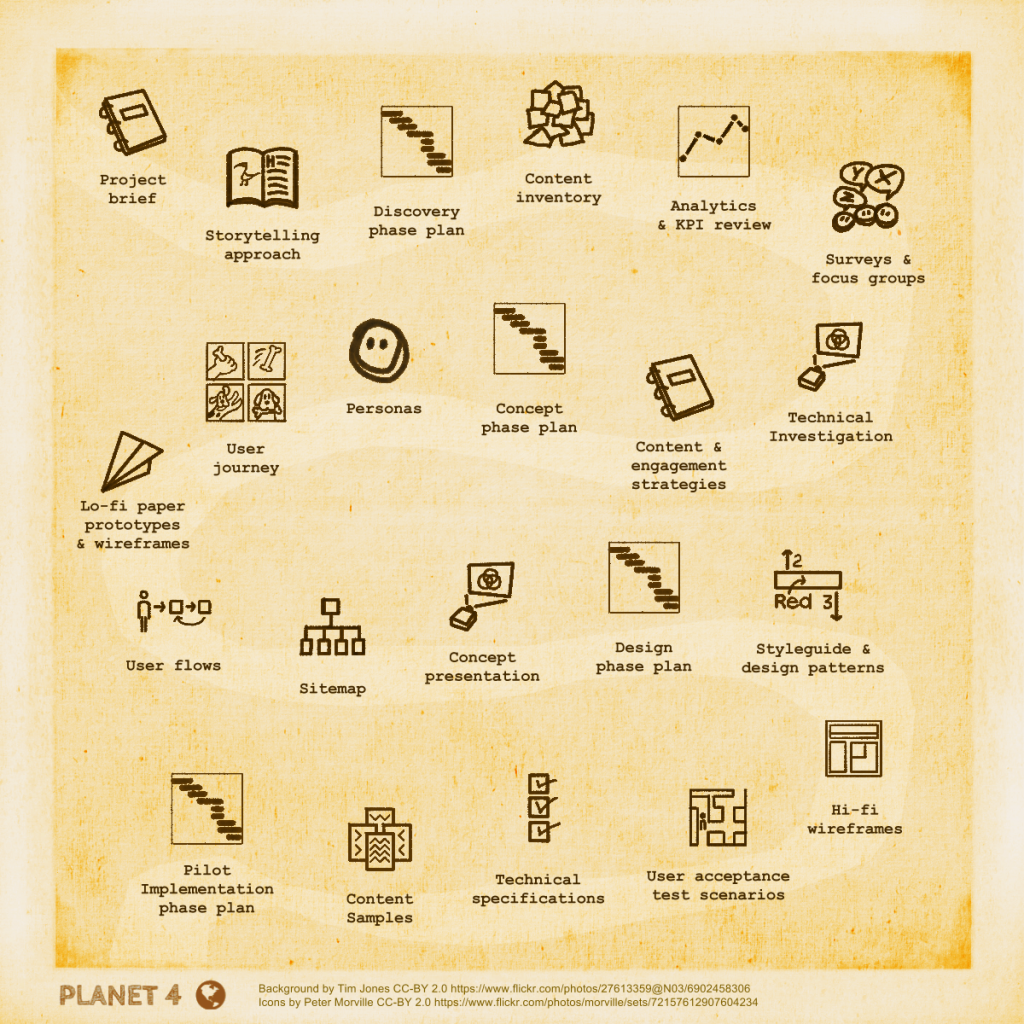
User-driven and community-based design projects are impactful and fulfilling. In the redesign of Greenpeace.org a remix of the Open Decision Framework, the Open Design Kit and community collaboration is of highest importance. In this interactive session, I’d like to share my experiences in a hands-on way. Participants can bring their ideas, their businesses, their strategic directions, and together we’ll help each other set up structures and processes that invite people in. We’ll give advice, talk through issues and create a working atmosphere that helps people solve real world problems.
The open community is full of people with the skills and attitudes that could truly affect global change. I’m hopeful that wearing my Greenpeace hat will help open advocates see the value in sharing with activists and contributing to the environmental movement.

Image by Bryan Mather, We Are Open Coop
We Are Open Co-op
Not only do we all need to understand how our planet fits into the idea of the Commons, we need to talk about openness outside of what we call Open Source or Open Culture communities. Building bridges is the future of the commons. I want to help find and illuminate connections between different communities.
I’ve spent my career working at the crossroads between technology and a variety of different industries, leading to the combinations of: Technology + Media, Technology + Education, Technology + Activism. Spreading the beliefs, processes and culture of open from the tech community and into other sectors is part of the reason I am a founding member of the We Are Open Coop. Open principles and practices have gone mainstream in the past few years – from open government to open data, open science to open education, we’re working to connect people to the ideals of open.
Over the last year it’s also become more and more clear to me how much open and co-ops have in common. Reading Hal Plokin’s excellent post and attending the Open: 2017 Platform Cooperatives conference are just two recent things that have me thinking about finding ways to translate between open communities and co-op communities. Along with Doug Belshaw, a fellow co-founder of the We Are Open Co-op, I’ll be running a session called “Help us forge links between co-ops and the commons”.
By the end of this session, we hope to have some sort of an artefact that visualizes or structures the commonalities between the Open Movement and the Co-op Movement. We’ll build off the International Principles of Co-operation to create amap or framework (or comic strip!) to help people from both movements understand how they can work together to build a most just and equitable world.
More things to talk to me about
I’m looking forward to digging in deep and having meaningful discussions about sharing, community, and collaboration. I’m bound to get into a discussion about the work we’re doing at Opensource.com, and I always have plenty of thoughts on open education, remix, diversity and inclusion…Basically, just come find me and let’s see what we have to talk about. You can also reach out on twitter in advance of the Summit.
Let’s see how our sharing helps light up the commons.
Global Coalition Pushes for Unrestricted Sharing of Scholarly Citation Data
This week a coalition of scholarly publishers, researchers, and nonprofit organizations launched the Initiative for Open Citations (I4OC), a project to promote the unrestricted open access to scholarly citation data. From the website:
Citations are the links that knit together our scientific and cultural knowledge. They are primary data that provide both provenance and an explanation for how we know facts. They allow us to attribute and credit scientific contributions, and they enable the evaluation of research and its impacts. In sum, citations are the most important vehicle for the discovery, dissemination, and evaluation of all scholarly knowledge.
There’s now open citation data from 14 million scholarly papers. Both open access and subscription-based scholarly publishers are contributing to the project. These publishers include the Association for Computing Machinery, PLOS, Wiley, SAGE Publishing, Springer Nature, eLife, Taylor & Francis, and many others.
The goals of project is to promote the availability of data on citations that are “structured, separable, and open.” According to the I4OC website:
Structured means the data representing each publication and each citation instance are expressed in common, machine-readable formats, and that these data can be accessed programmatically. Separable means the citation instances can be accessed and analyzed without the need to access the source bibliographic products (such as journal articles and books) in which the citations are created. Open means the data are freely accessible and reusable.
In order to ensure that the data are freely accessible and reusable, the structured citation metadata will be published using the CC0 Public Domain Dedication, which means that the data may be used without restriction. CC0 enables creators and owners of copyright- or database-protected content to waive those interests in their works and thereby place them as completely as possible in the public domain, so that others may freely build upon, enhance and reuse the works for any purposes without restriction under copyright or database law.
Congratulations to I4OC on the launch of this important initiative. We hope that the open sharing of citation data can aid in the discoverability of all types of research, and generate new and interesting connections in our understanding of scientific and scholarly works.
Community and Movement at CC Summit: We’re ready to jump in
It’s been a big year for community at Creative Commons. At the CC summit at the end of this month we’ll move ahead on the Global Network Strategy. We have identified platforms for people to start analysing and have network discussions for deeper conversations. The Global Network Strategy began at the last Global Summit in Seoul in 2015. No doubt you’ve either read the document, participated in a webinar or in person meeting or joined the Slack channel. This is the first time CC has spent time seriously looking at the affiliate network and the broader community. We heard you, we’re ready to jump in.
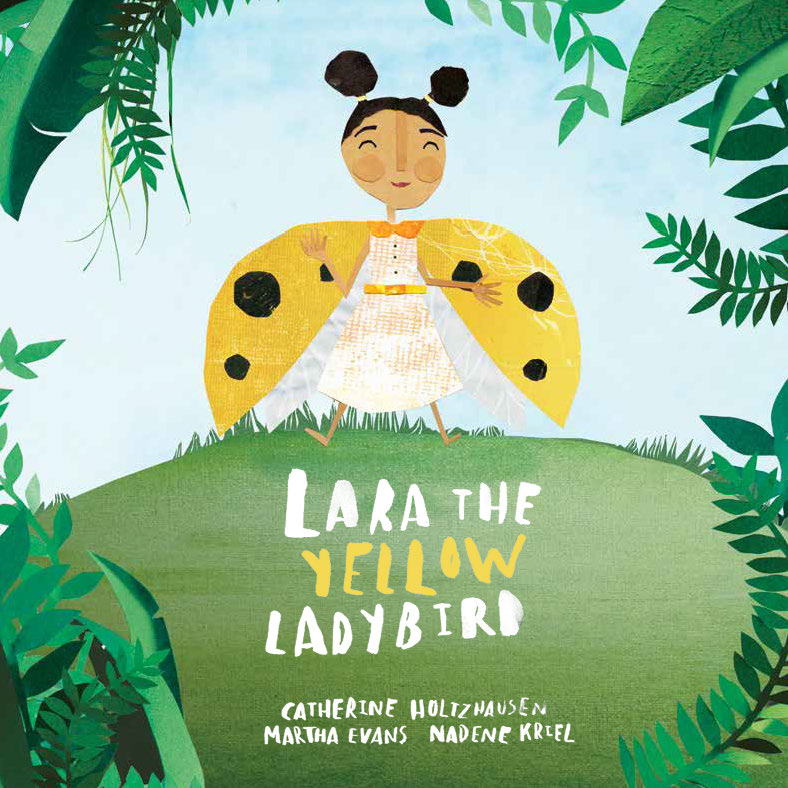
credit: Lara the Yellow Ladybird , Illustrated by Catherine Holtzhausen , Written by Martha Evans, Designed by Nadene Kriel, CC-BY 4.0
With all this energy, the Community & Movement track is filled with new voices as well as established members. If you want to learn how CC licenses work in the wild, be sure to visit the session with projects like Book Dash, African Storybook Initiative and Pratham Books’ StoryWeaver in their session Addressing the Scarcity of Multilingual Reading Resources for Children.
Look out also for a discussion on CC in the South Seas: Lessons Learned in Aotearoa New Zealand from CC New Zealand Communications Lead Elizabeth Heritage. CC New Zealand has always been a strong team, with effective newsletters and content, and this talk is sure to be inspiring to community members of all types.
Open Science nerds don’t worry! We’ve got you covered in Community & Movement. Brian Bot from SAGE Bionetworks will be there to share insights on their project in decentralized biomedical research ecosystems. Interested in hadron colliders? The ATLAS experiment at CERN is will be in Toronto to talk about Outreach and Education by large Scientific (or just Physics) collaborations.
Ready to get your hands dirty and dig in? Open educational resources (OER), Galleries, libraries and Museums (we call them ‘GLAM’), and copyright reform they will have their own space to discuss in depth regarding their actual challenges and how our movement will actively contribute to those spaces. No matter what your level of experience, join the conversation!
In addition, at summit we have three great discussions: one on Building a Culture of Gratitude and another called How Can we Work Together? Another exciting session is called Thinking BIG for the Commons.
Come find your people at the Community & Movement track! In the meantime, you can find me on Slack in the #cc-summit channel. Looking forward to seeing you in Toronto.
With Gratitude.










